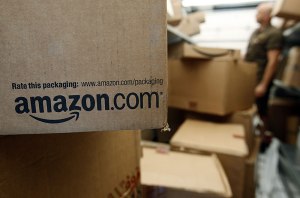
What happens when one country’s imports consistently exceed its exports, creating a deficit in the international balance of trade? There is probably no greater misunderstanding about the real nature of wealth than when a discussion turns to the balance-of-trade question.
Henry Hazlitt, author of Economics in One Lesson explained this phenomenon when he wrote:
… the same people who can be clearheaded and sensible when the subject is one of domestic trade can be incredibly emotional and muddleheaded when it becomes one of foreign trade.”
I recently taught an economics course to a group of learned professionals, and this one topic was the most contentious. Most everyone seemed to have an inordinate fear of China, India, and other foreign nations accumulating more and more of America’s debt.
I asked the group a simple question: If China and India become wealthier, is that a threat to America? The general consensus seemed to be yes, illustrating how zero-sum thinking is endemic to this discussion. Adam Smith eloquently wrote about this in 1776 in his seminal book, The Wealth of Nations:
Each nation has been made to look with an invidious eye upon the prosperity of all the nations with which it trades, and to consider their gain as its own loss. Commerce, which ought naturally to be, among nations, as among individuals, a bond of union and friendship, has become the most fertile source of discord and animosity.”
USA = Free Trade Zone
One of the reasons the United States of America is such a relatively wealthy country is that it maintains a free trade zone among its 50 states. The Constitution prohibits the states from interfering with trade among their respective citizens; there are no tariffs or import, export, or other restrictions within the 50 states. No individual state worries if it is running a deficit with another.
Economist Russell Roberts posed this challenging question in his delightful academic novel,The Choice: A Fable of Free Trade and Protectionism:
Shouldn’t Florida help out Minnesota by importing just as many oranges from Minnesota as Minnesota imports from Florida? Trade flows should be unequal. … if you pick any one state in the United States and look at its trade position with respect to other states, you’d see a lot of deficits and surpluses.”
People Trade, Not Governments
Trade deficits and surpluses are merely accounting conventions with no explanatory relationship to the underlying reality of an economy, which is why accountants and economists have different worldviews. If a free trade zone works internally for the United States, why would it not work internationally among the countries of the world?
It helps to keep in mind that countries do not trade, people do. In any transaction, as Adam Smith pointed out, both parties must gain for it to take place at all––the antithesis to a zero-sum condition.
You buy a Lexus only because you perceive it as being of higher value than the price you are paying. The government, for all practical purposes, has nothing to do with it; nor is it any of its business.
As individuals, we run trade surpluses and deficits all the time. I run a deficit with my local grocery store, importing more from them than I sell to them. You run a large surplus with your employer, who pays you more than you buy in products or services from them in return. So what? The resulting accounting deficits and surpluses simply do not reflect the economic reality behind these billions and billions of individual transactions around the world.
This is what Adam Smith meant when he wrote, “Nothing can be more absurd than this whole doctrine of the balance of trade.”
The gains from trade are what we import, not export. The purpose of production, in the final analysis, is consumption. The more imports we can acquire for fewer exports, the wealthier we are, either as individuals or as a country.
Other countries face the same realities, and we are no more likely to obtain the goods and services we desire by trading pieces of green paper with other nations than we are to send letters to the North Pole and get gifts from Santa Claus.
Being a creditor or debtor nation simply has no correlation with a country’s standard of living. Thomas Sowell exposes this fallacious concept in Basic Economics:
In general, international deficits and surpluses have had virtually no correlation with the performance of most nations’ economies. Germany and France have had international trade surpluses while their unemployment rates were in double digits. Japan’s postwar rise to economic prominence on the world stage included years when it ran deficits, as well as years when it ran surpluses. The United States was the biggest debtor nation in the world during its rise to industrial supremacy, became a creditor as a result of lending money to its European allies during the First World War, and has been both a debtor and a creditor at various times since. Through it all, the American standard of living has remained the highest in the world, unaffected by whether it was a creditor or a debtor nation.”
No one revealed the specious reasoning behind balance-of-trade concerns better than the French economist, statesman, and author Frédéric Bastiat (1801–1850), whom the Austrian economist Joseph Schumpeter said was “the most brilliant economic journalist who ever lived.”
Bastiat used entertaining fables and carried the logic of the proponents of protectionism to their logical extreme, with biting wit. One of his most famous essays, “Petition of the Candlemakers,” was a parody letter from the manufacturers of “candles, tapers, lanterns… and generally of everything connected with lighting,” arguing against the unfair competition––since its price was zero––of the sun.
Bastiat understood that exports were merely the price we pay for imports, and having to work harder to pay for those imports did not lead to wealth. Using impeccable logic, Bastiat wondered if exports are good and imports are bad, would the best outcome be for the ships carrying goods between countries to sink at sea, hence creating exports with no imports?
Stop worrying about the accounting fiction known as the trade deficit. It’s meaningless, and leads to harmful effects in public policy that destroy wealth.













